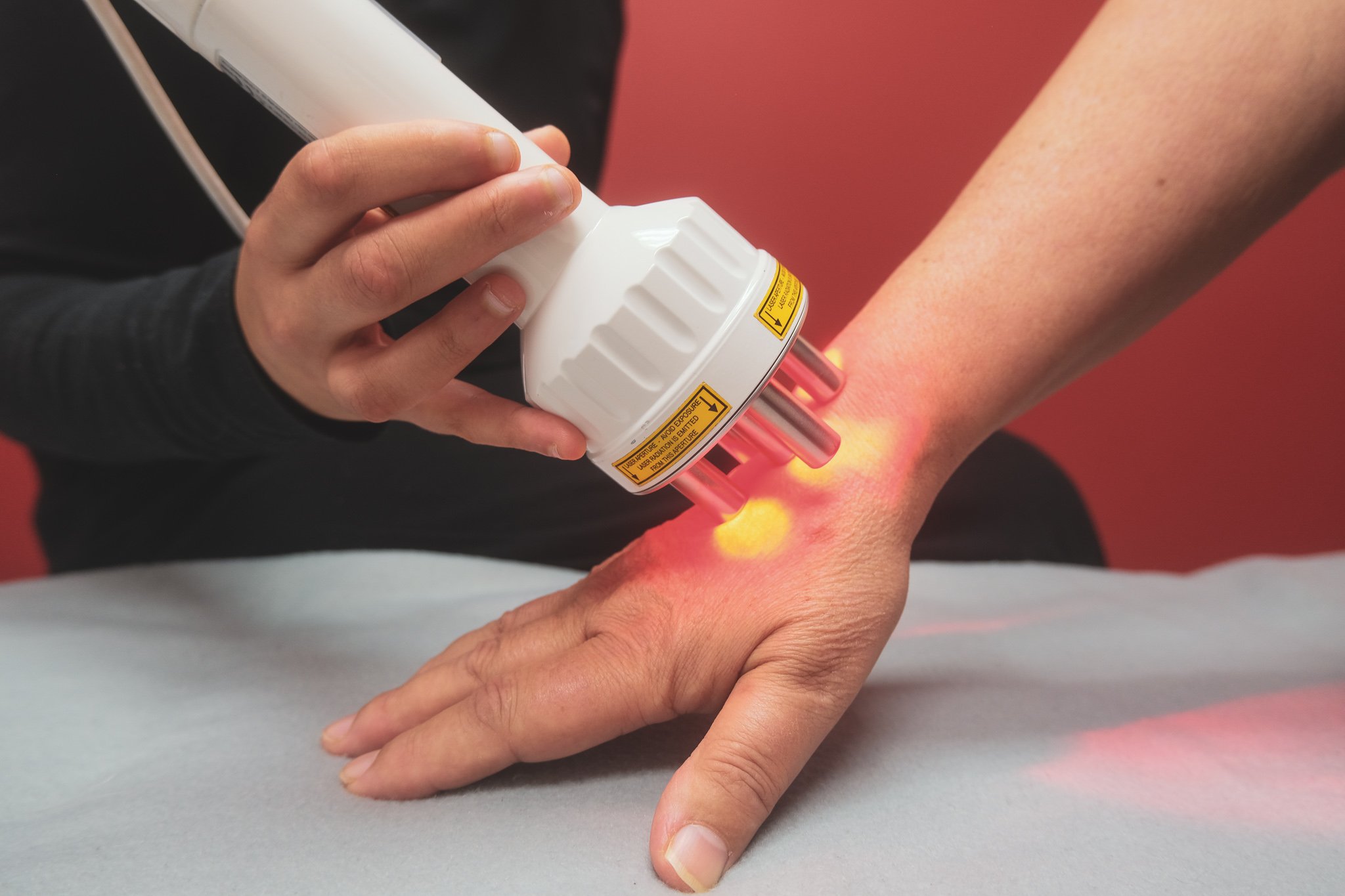What Does Photobiomodulation Mean?
Table of ContentsNot known Details About Photobiomodulation Getting The Photobiomodulation To WorkWhat Does Photobiomodulation Do?4 Easy Facts About Photobiomodulation Shown
Laser treatment is a clinical treatment that utilizes concentrated light to stimulate a procedure called. During PBM, photons go into the cells and interact with the cytochrome c complicated within mitochondria. This interaction causes a biological cascade of events that leads to a boost in mobile metabolic rate, which can as well as increase the recovery process.There is agreement that the application of a healing dosage of light to impaired or inefficient tissue results in a mobile reaction mediated by mitochondrial mechanisms. Photobiomodulation. Studies have revealed that these changes can affect pain and swelling, along with, tissue fixing
Adjustments in ATP, responsive oxygen types and nitric oxide comply with light absorption by Cc, O. These effects are redox state and dose dependent.

The 4-Minute Rule for Photobiomodulation
PBM tools have actually been cleared for marketing by FDA with the Premarket Notification/510( k) process as adjunctive devices for the momentary relief of pain. These clearances were based on the presentation of medical data to sustain such cases (Photobiomodulation). In this therapy, a light resource is put near or in call with the skin, allowing the light energy (photons) to permeate tissue where it communicates with chromophores situated in cells causing photophysical and photochemical changes that result in changes at the molecular, mobile and tissue levels of the body
Remarkably, recent research study shows that light can boost performance in regular cells and cells. The possible applications of PBMT are numerous and are being explored experimentally at the standard science, pre-clinical and medical level. The current medical uses are for the relief of discomfort and swelling and the therapy of sporting activities injuries.

The treatment parameters and number of sessions required for PBMT are reliant upon location and cause. PBMT normally calls for more than one therapy for optimal pain alleviation.
Photobiomodulation Fundamentals Explained
Treatment criteria for PBMT were originally developed making use of cells artificial insemination and in little pet designs. These therapy criteria normally had a reduced irradiance and fluence and worked well for cutaneous applications. When medical professionals began to utilize PBMT to deal with structures that were located much deeper in the body, they used these parameters with unfavorable outcomes.
We now comprehend that these unfavorable studies resulted from incorrect device and treatment criteria for transcutaneous therapy of much deeper structures. Recent breakthroughs in laser treatment devices and more research company website study into the appropriate does have dramatically improved the results of PBMT. For treating deep tissues, the wavelength of light used identifies the deepness of infiltration right into a cells.
It is vital that a clinician uses the appropriate wavelength of light and specifications to treat a condition. One wavelength and one set of treatment parameters will certainly not be reliable for all conditions. Unfavorable side impacts have actually not been reported from the usage of PBMT.
Photobiomodulation for Dummies
In the initial experiment, Dr. Endre Mester, utilized shaved rats and observing how the laser affected their ability to expand hair contrasted to the team that was not obtaining LLLT. He found that weblink the group of mice obtaining LLLT had the ability to expand their hair back faster than the team of computer mice that didn't receive LLLT (Hoon C, et alia; 2012).
This therapy is termed this means to set apart the distinction between the lasers some careers make use of to reduce (eg. Low-level light treatment is painless, non-invasive treatment.
LLLT has a biphasic feedback, implying that lower dosages are generally attended be extra advantageous than higher doses. That being claimed, dosages higher or reduced than the optimum dose doesn't impact (Hoon C, et al; 2012). Because of this, it can be difficult to have research studies on LLLT with numerous criteria.
Some firms integrated the two (LED and laser) to offer an extra all-around therapy given that lasers can pass through much deeper than LED and infrared light (Norman Doidge, The Brain's Method of Healing, 2015). Throughout therapy, the area that is being treated is exposed to LED light from a Bio, Flex Laser, which is at 660 nm wavelength, adhered to by infrared light at 830-840 nm wavelength.